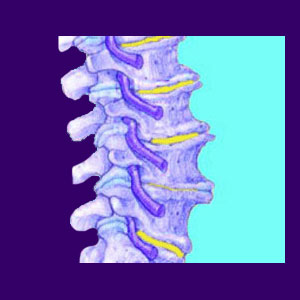
Spondylotic spurring is also sometimes called spondylitic spurring, arthritic spurring, vertebral spurring or spondylosis spur formation. This degenerative condition is a usual part of the aging process for many patients and is especially known to exist in the cervical and lumbar spinal regions. Spondylosis describes the general accumulation of arthritic debris on the surfaces of the spinal bones or in the vertebral joints of the spinal column. While most cases of spondylosis are not particularly troublesome or painful, some cases can be a real nightmare when the degeneration begins to encroach upon the neurological structures of the back or when interaction between bone spurs causes mechanical back pain.
This treatise explores the causes and consequences of bone spurs that often grow and accumulate on the spinal structures.
What is Spondylotic Spurring?
Spurring refers to the growth of osteophytes, also called bone spurs, on the various surfaces of the vertebrae. These osteophytes are often implicated in enacting spinal stenosis or foraminal stenosis, depending on where they actually occur in the spinal anatomy.
Spurring usually refers to growths on the edges of the vertebrae, which often overhang the intervertebral disc structures and are caused from bone to bone contact due to desiccated discs. In many cases, osteophytes are simply there and do not cause any symptoms at all. In these circumstances, they sometimes act as scapegoats on which back ache is unjustly blamed. In other scenarios, the bone spurs may indeed produce symptoms, both minor or catastrophic.
It is completely normal and expected for arthritic debris to partially block the central canal and foraminal openings as people age. However, only a small percentage of people will suffer symptomatic effects of these changes, when the arthritic processes work to compress the spinal cord or one or more of the spinal nerve roots.
Bone Spurring Expectations
The growth of bones spurs in and around the spinal canal is normal as we age. Spinal degeneration usually begins in earnest the 3rd decade of life for most of us and continues until we die.
The intervertebral discs are usually the first spinal structures to demonstrate noticeable deterioration through the process now known as degenerative disc disease. Once the discs begin to lose integrity, the vertebrae usually begin to show the arthritic changes that eventually lead to vertebral spurring. Although this all sounds very bad, it is actually very normal and is actually expected.
Spondylotic Spurring Guidance
If you have been diagnosed with vertebral spurring or the growth of osteophytes on the spinal structures, do not be surprised. It is typical to experience arthritis in the spine to one extent or another and most cases are luckily nothing at all to fear.
For particularly problematic cases, aggressive treatment and even invasive surgery may be necessary. However, these cases represent only a small percentage of people affected by regional spondylosis.
Never rush into any type of therapy, but take particular care when even considering surgical intervention as part of your arthritis back pain treatment plan. It must be noted that of all back surgery techniques, those designed to remove arthritic debris in the spine actually work the best. For patients who do require invasive care, this will come as very good news!




